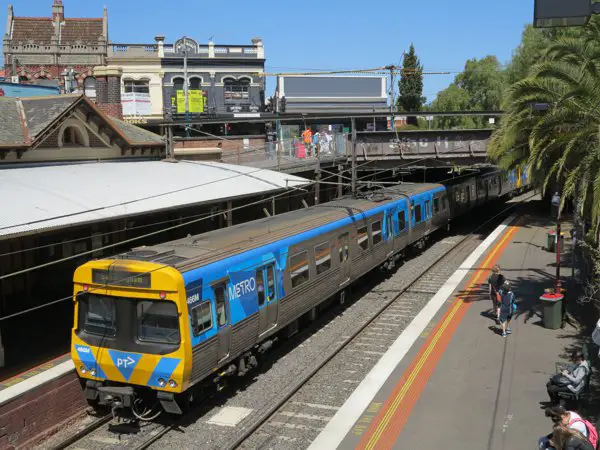Melbourne train and tram network, with map now updated for 30 November 2025 showing the new MetroTunnel.
Melbourne has an impressively large suburban train network with sixteen lines serving 225 stations. The city is famously also home to the largest electric street tram network in the world with 24 routes serving 1,632 tram stops.
Find out more ⤑
Trains run from five city centre stations (known locally as the City Loop) on lines to all points of the compass. To the west, trains travel to Williamstown, Laverton/Werribee and Sunbury. To the north, you can get trains to Flemington Racecourse, Craigieburn, Upfield, South Morang and Hurstbridge. To the east, there are trains on lines to Lilydale, Belgrave, Alamein and Glen Waverley. To the south-east there are trains to Pakenham and Cranbourne. And the the south you can catch trains to Frankston / Stony Point and to Sandringham.
Trains to West Footscray and Westall also run through the MetroTunnel which runs north-south through the city centre and connects with the City Loop at Melbourne Central and Flinders Street stations.
Trains on all lines generally run between 10 and 20 minutes apart on all lines from early morning to to id evening then less frequently until about midnight. Trains run all through the night on Friday and Saturday nights. The one major exception is the Flemington Racecourse line on which trains run only on days when major events are scheduled at Flemington Racecourse or at the Showgrounds.
Trams run on 24 routes (or more depending how you count them) right across the inner and middle suburbs, although they are less common in the western suburbs. As with trains, trams run from early morning to midnight, 7 days per week, and SOME lines (marked on our map with a crescent moon symbol) run all through the night on Friday and Saturday nights.
Melbournes multi-modal transport smartcard is myki. Buy a myki from any station or vending machines at major city tram stops, top it with pre-paid value using cash or card, then touch on whenever you board a tram or enter a station, and touch off whenever you leave a station.
A free tram zome covers the central city area. When travelling on any tram and your entire journey is in this area, you journey is free and you do not need any myki. Tram stops in the Free Tram Zone are marked on our map with green ticks.




































































